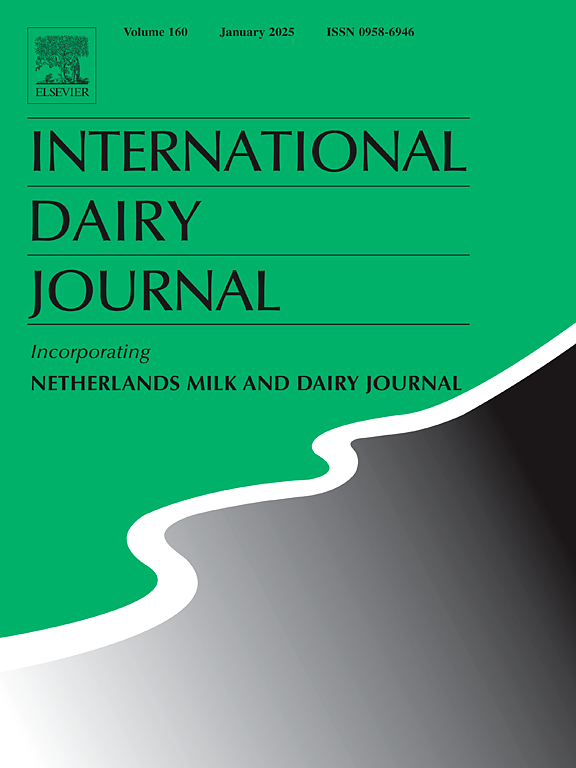奶酪制作过程中微生物群的变化——从生牛奶到最终奶酪
IF 3.4
3区 农林科学
Q2 FOOD SCIENCE & TECHNOLOGY
引用次数: 0
摘要
目的是评价饲喂不同类型青贮饲料对原料奶和奶酪微生物群的影响。在不添加添加剂的情况下生产不同的青贮饲料,进行酸处理并接种LAB发酵剂,在3周的时间内饲喂每种青贮饲料。制作了一种盐水腌制的长熟硬奶酪,收集了成熟过程中的牛奶、奶酪凝乳和奶酪样品,并使用16S rRNA测序对其微生物群进行了表征。原料奶微生物群由许多不同的属组成,前20个属解释了75%的相对丰度。在奶酪中,乳球菌(Lactococcus),其次是Leuconostoc和乳杆菌(Lactobacillus),在整个成熟过程中都是优势属,表明发酵剂对奶酪的影响很大。饲喂不同的青贮饲料并没有导致原料牛奶或成熟奶酪中微生物群的差异。扩增子序列变异水平的结果表明,原料奶和奶酪中LAB的相对丰度沿价值链呈下降趋势。本文章由计算机程序翻译,如有差异,请以英文原文为准。
Changes in microbiota during the cheese making process – from the raw milk to the final cheeses
The objectives were to evaluate effects of feeding different types of silages on the microbiota of the raw milk and the resulting cheeses. Different silages were produced without additives, acid treated and inoculated with a LAB starter culture, and each silage was fed to dairy cows during a three-week period. A brine-salted long ripened type of hard cheeses was produced and samples of milk, cheese curd and cheese during ripening were collected, and their microbiota characterised using 16S rRNA sequencing. Raw milk microbiota consisted of many different genera, the top 20 genera explaining 75 % of the relative abundance. In cheese Lactococcus, followed by Leuconostoc and Lactobacillus, were the dominant genus throughout the ripening, indicating a strong influence from the starter culture. Feeding the different silages did not result in differences in the microbiota in the raw milk or ripened cheeses. Results at amplicon sequence variant level showed that the relative abundance of LAB present both in the raw milk and in cheeses, decreased along the value chain.
求助全文
通过发布文献求助,成功后即可免费获取论文全文。
去求助
来源期刊

International Dairy Journal
工程技术-食品科技
CiteScore
6.50
自引率
9.70%
发文量
200
审稿时长
49 days
期刊介绍:
The International Dairy Journal publishes significant advancements in dairy science and technology in the form of research articles and critical reviews that are of relevance to the broader international dairy community. Within this scope, research on the science and technology of milk and dairy products and the nutritional and health aspects of dairy foods are included; the journal pays particular attention to applied research and its interface with the dairy industry.
The journal''s coverage includes the following, where directly applicable to dairy science and technology:
• Chemistry and physico-chemical properties of milk constituents
• Microbiology, food safety, enzymology, biotechnology
• Processing and engineering
• Emulsion science, food structure, and texture
• Raw material quality and effect on relevant products
• Flavour and off-flavour development
• Technological functionality and applications of dairy ingredients
• Sensory and consumer sciences
• Nutrition and substantiation of human health implications of milk components or dairy products
International Dairy Journal does not publish papers related to milk production, animal health and other aspects of on-farm milk production unless there is a clear relationship to dairy technology, human health or final product quality.
 求助内容:
求助内容: 应助结果提醒方式:
应助结果提醒方式:


